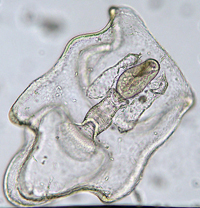Immunity in infectious diseases

© Bruno Vellutini from São Paulo/São Sebastião, Brasil, licensed under Creative Commons Attribution ShareAlike 2.0 License (cc-by-sa-2.0)
The research of Mechnikov and Ehrlich gave rise to the two branches of immunity studied asimmunology: natural and adaptive immunity. Mechinkov pioneered the idea of using very simple organisms to study processes too complex to be followed in humans. He began his studies in bipinnaria, the larva of starfish. These creatures were very simple and, importantly, transparent, so the processes within them could be observed easily. He found that when they were pierced by a splinter, many cells moved to the damaged area, and consumed damaged tissue or infectious microbes. He called these ‘phagocytes’ or devouring cells. Through further experiments, he was able to show that water-fleas, higher animals and humans have a similar response to injury.
Ehrlich led teams of researchers to discover that toxins or microbes in the blood can be neutralised by antibodies which are specific for a particular particle and exist freely in the blood stream. It was antibodies that gave immunity in ‘serum therapy’. Through experiments on monkeys and mice he showed that infectious microbes can adapt in the body and become resistant to antibodies. This long series of experiments led to refinement of serum therapy and a greater understanding of immunity.
Last edited: 27 August 2014 06:01
